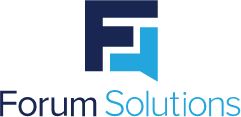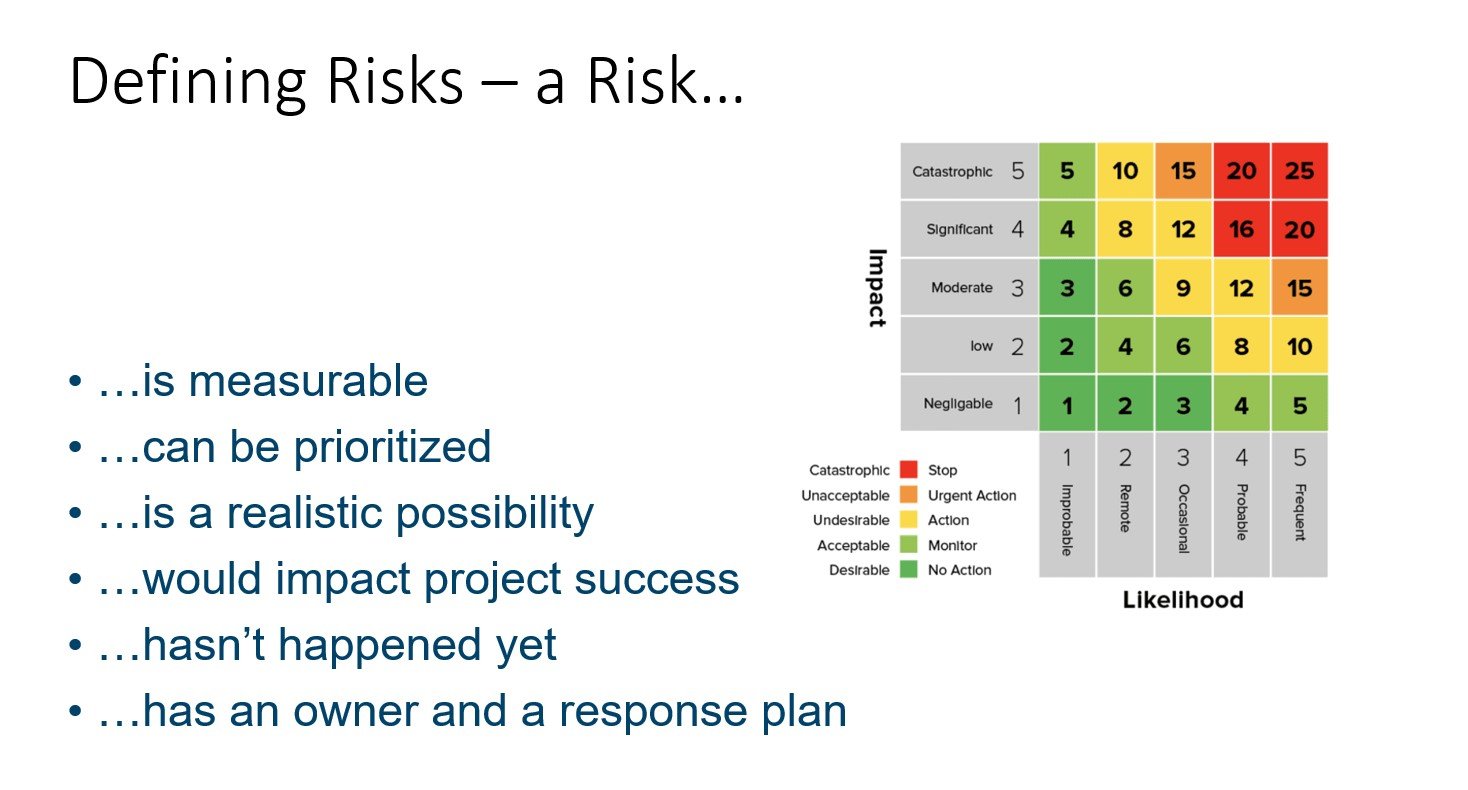Project Logic: Common-sence Principles for Impactful Project Management, Part 2 of 2
By Ben Heege
This is the second in Forum Solutions’ two-part series on the subject of Common Sence Principles for Impactful Project Management. For more insights, see: Project Logic: Common Sence Principles for Impactful Project Management, Part 1 of 2.
Introduction
Whatever your role in a project, any business effort can benefit by applying a handful of simple and customizable principles and tools to accomplish the most critical aspects of delivering a project, without getting bogged down in the documentation doldrums or hung up in analysis paralysis. The previous installment of this two-part article outlined a few suggested principles to optimize time and maximize impact. In this installment, we will focus on several tools which can be intuitive and accessible to most people regardless of training or experience, and which can flex to project needs whatever the situation or business goal.
Tool #1: The Iron Triangle of Project Management
Healthy projects must have boundaries to deliver effectively, and to avoid unforeseen scope creep, missed deadlines, and cost overruns.
The Iron Triangle of Project Management illustrates that maintaining a balance between a project’s scope (for example, a list of business requirements), the timeline (or schedule), and the anticipated costs (or budget) will ensure each need is sufficiently met without sacrificing quality. Well-defined boundaries for scope, time, and cost do not mean a project cannot meet critical business needs, or does not need to adjust when some unplanned event occurs, but they do reinforce some inevitable truths:
Time and money are never infinite, whatever your business goal might be.
You cannot change one part of a project without impacting another part.
What is it?
Scope – the “What” of a project. This could be a set of business requirements for new software, a list of documentation deliverables, or any number and combination of business objectives.
Time or Schedule – the “When” of a project. Indicated by milestones like “Start” or “Go-live” or “Delivery”, and the overall expected duration of the project effort.
Cost or Budget – the “Who” or “How Much” of a project. The project budgets and human capital required to deliver, alongside other costs like equipment or employee travel expenses.
Best Practices:
Establish a baseline of expected Scope, Schedule, and Budget before project work begins. Get it in writing, and review or communicate it with all important project stakeholders and leaders.
Because business needs or priorities may change throughout the life of any project, a project manager should continually watch for any changes to the baseline Scope, Schedule, and Budget, assess and communicate impacts from those changes, and work with the project team and stakeholders to manage delivery of revised milestones, scope, or costs.
Pro Tip:
“The weakest ink is more powerful than the strongest memory.” Make sure to update written documentation recording those aspects of the project, noting the date when the change was made, and the decision-makers involved.
Tool #2: Integrated Project Plan
What many would call “the core” of project management, at a minimum the Integrated Project Plan is a living document which defines a detailed view of: a) What needs to be done, b) Who needs to do it, and c) When is it needed.
What is it?
A spreadsheet document or software tool that defines:
Elements of Scope like tangible Deliverables, and the Activities or Tasks required to accomplish them.
Elements of Schedule like major project Milestones, as well as timing and duration of the Tasks and Activities which make up the plan.
Elements of Cost or Resources indicating who “owns” delivery of each part of the plan.
Additional details such as Task Status (e.g. Not Started, In Progress, Complete).
Best Practices:
Build a baseline plan at the outset of the project and maintain the plan continuously through the life of the project as a primary tool governing project work and measuring project health.
On a regular basis (weekly or bi-weekly), review and update of the existing plan with the core working team, focusing on questions such as “is anything overdue?”, “what work is coming up next?”, “do any tasks or dates or owners need to be adjusted?”.
Pro Tip:
Consult the experts. The project’s core working team likely has the expertise and information needed to build the plan. Get them involved from the beginning to define the tasks in the plan, and you’ll see stronger understanding and ownership across the team!
Tool #3: Risk/Action/Issue/Decision Log
A tool utilized alongside other key project artifacts to manage challenges or changes to a project.
What is it?
A document which captures important aspects of a project including:
Risks to project success, which could be defined as something which has a realistic possibility of occurring in the future and would negatively impact the project.
Actions which are needed to deliver or correct some aspect of the project.
Issues negatively impacting project progress or success at the present time, possibly previous Risks which have now been realized.
Decisions which are needed to resolve open questions or set direction for the project.
Best Practices:
All items logged should have a clear a) Action Plan, b) Timeline, and c) Owner to identify the path to resolution or closure as needed.
Any item which will need to be “discoverable” in the future as part of the project record (e.g. auditable items, legal or regulatory concerns), should be logged.
Pro Tip:
Avoid duplicating documentation where possible. Often items like Actions or Decisions may already be documented in other project artifacts such as design specifications, training or process materials, or meeting agendas and notes. If it is not critical to log it again, skip it.
Conclusion
Project Management is a discipline utilized across industries and organizations around the globe, with as many approaches and applications as can be imagined.
We have examined a few common sense and customizable tools and principles which can add value to any project, which can be intuitive and accessible to most people regardless of training or experience, and which can flex to project needs whatever the situation or business goal. Thanks for taking the time to read this article, and best of luck with your next project.
Ben Heege a Forum Solutions Senior Consultant with extensive experience in project and program management, Agile product delivery, and operations. Ben holds a B.A. in Communication Arts from the University of Wisconsin, and a Certificate of Business Administration from the Foster School at University of Washington.
Forum Solutions is a management consulting company dedicated to crafting and delivering transformational outcomes for our clients, our colleagues, and our community. With our help, clients become more agile, resilient, and connected, bringing great ideas to fruition with brilliant results. From start-ups to the Fortune 50, business leaders rely on Forum Solutions to help them form and realize their strategies. Our company is a certified Woman Owned Business that believes in developing and growing our colleagues, company, and region in a socially conscious way.





